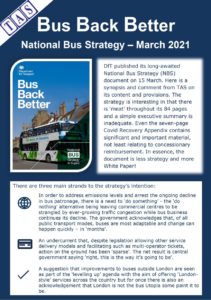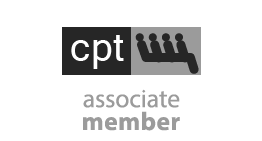
The TAS Partnership Welcomes National Bus Strategy Despite Concerns
TAS is very conscious of the reducing skills pool at local authorities, as a result of cuts in staff numbers and reduced funding and, therefore, are encouraged by the commitment to give Local Transport Authorities (LTAs) the staffing resources needed and the development of a Bus Centre of Excellence. TAS and its associates offer a range of established training courses to the public transport industry, covering history, operation, finance, procurement, planning and service development, at a variety of levels.
TAS has been a long term supporter and promoter of Partnership working between bus operators and LTAs. Whilst it is disappointing that there is a focus on only one type of partnership in the form of the more bureaucratic Enhanced Partnership, it is welcome that this is placed above franchising as a solution to improving bus services. However, the deadline of October 2021 to publish a Bus Service Improvement Plan may prove to be an overly ambitious goal for some areas where stakeholder relationships are less developed.
Many of the ‘vision’ statements made in the strategy reflect our understanding and advice over the last few years, and are heartening to read. In particular, the emphasis on simplified networks, local branding, and the acknowledgement that a lack of evening services reduces the attractiveness of the daytime provision. The focus on ensuring that information is up to date including network maps and at stop timetables is also to be applauded.
Concerns
Some of the content however may reflect a somewhat over-optimistic assessment of what is possible given external barriers, particularly where the availability of finance continues to obligate the maintenance of a mainly commercial proposition. Operation within an Enhanced Partnership will require LTAs to provide more financial support than hitherto and prudence will ensure that they too will need to adopt a quasi-commercial approach to network development to safeguard their investment. Whilst we always encourage fares and networks to be as simple as possible for passengers to understand and use, we also know that a one size fits all approach cannot be applied.
Steps towards flat fare areas should be taken with caution, as often a distance-based fare is the most appropriate approach. The transition to a flat fare risks losing revenue as short distance passengers are priced off the network and longer distance passengers no longer cover their costs.
Similarly having a single high frequency service along a corridor rather than multiple lower frequency services has helped grow ridership in the past. However, there has to be somewhere for the high frequency service to go without creating over-bussing at the outer reaches. Many urban operators already successfully provide high frequency corridors from the combination of less frequent services – this creates the best of both worlds as outlying areas get a reasonable service without over provision. Whether there is a through fare or not, people do not like being forced to change from a feeder to a main service on a simple urban journey and this does not encourage patronage growth.
The focus on app-based DRT as the solution to the rural transport issue is concerning. Whilst these services do play their part there is a whole suite of options that should be available. There is little acknowledgement of the rural premium, the additional price that is paid for living in a rural area. Nor is there mention of existing solutions such as the successful Lincolnshire InterConnect and CallConnect networks where scheduled and demand responsive feeders meet core inter-urban services.
Community Transport (CT) organisations have been providing essential services to rural and urban areas which aren’t viable from a commercial prospect, however there is little mention of CT operations within the strategy. Neither is there a strategy for school services which not only act as a shop window to children and young people, but also allow provision of marginal public services through shared resources. If one of the main objectives is modal shift, tackling the school run should be a priority.
How Can TAS Help?
TAS researched and developed detailed guidance on Enhanced Partnerships for the DfT prior to the Bus Services Act. We are thus in a very strong position to support local authorities and operators to develop and deliver the necessary Partnership agreements. This can be as general support, as third-party intermediary or as critical friend.
To find out more please contact Sarah Huntley (MD) on 01772 204988 or email info@taspartnership.com
Notes to editors:
- The TAS Partnership Limited was founded in 1989 and is the UK’s leading specialist public transport consultancy, with a turnover in excess of £500k and more than 20 full-time staff and associates. Clients have included national, regional and local government and public transport operators throughout the country, including all the major groups.
- TAS expertise covers bus network analysis and design, concessionary fares, rail services, light rail and bus rapid transit, rural services and networks, plus market research and analysis. In addition, TAS is an acknowledged expert in the fields of community and accessible transport, social service, health and educational transport services, procurement and State Aid issues.
- TAS runs industry-wide models covering costs, revenue and patronage for UK bus and rail operations.



